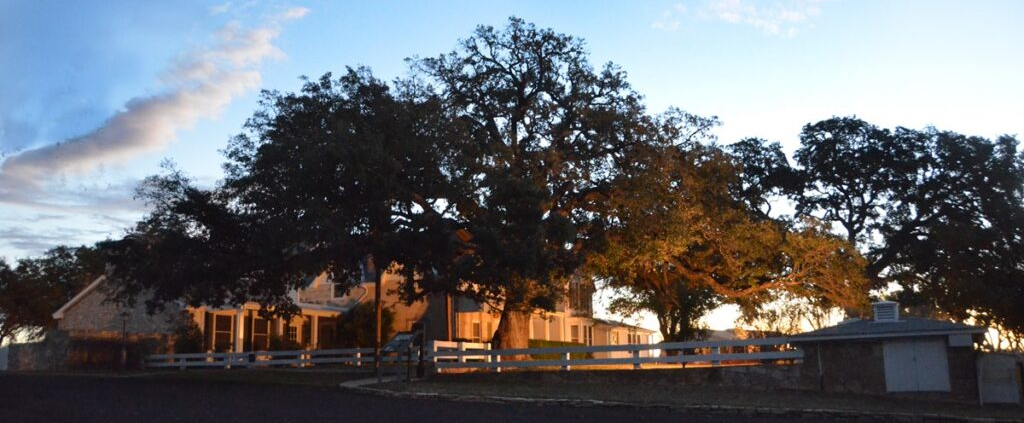Structure work starting on Texas White House at LBJ Ranch

The Texas White House at Lyndon B. Johnson Ranch in Stonewall, part of LBJ National Historical Park. Photo from the park’s website
Lyndon B. Johnson Ranch in Stonewall will begin preparations from Jan. 2-4, 2023, for the Texas White House rehabilitation project to correct structural issues. The building, part of the LBJ National Historical Park, has been closed to visitors for all of 2022 due to health and safety concerns.
A crew from the engineering and architecture firm of Wiss, Janney, Elstner Associates Inc. will investigate the site to determine conditions above and below ground of the Texas White House and other historic buildings at the ranch.
Workers will dig exploratory test pits as large as 6 feet by 6 feet wide and up to 3.5 feet deep and also remove and replace portions of the building’s exterior boards and siding, according to a LBJ park media release.
During work, the Lady Bird Johnson exhibit room in the Hangar Visitor Center will be closed as well as part of the restroom facilities. All other points of interest, including the driving tour of LBJ Ranch, will maintain normal hours of operation, the park announced. Both the national park and LBJ State Park and Historic Site will be closed Jan. 1 for New Year’s Day.
The historic building is called the Texas White House because President Johnson would often conduct some of the nation’s business there, hosting world dignitaries and the White House Press Corps under its spreading oak trees. (Read “Walk in the footsteps of President LBJ” for more on Johnson’s connection to the Texas Hill Country.)
The rehab project, which is expected to last through 2023, is funded by the 2020 Great American Outdoors Act. It is currently in the design phase.
The GAOA and the Bipartisan Infrastructure Law and other construction funding sources are part of a concerted effort to address the large maintenance backlog in national parks, according to the media release. Supported by revenue from energy development, the act’s Legacy Restoration Fund provides up to $1.3 billion per year for five years to make significant enhancements in national parks to ensure their preservation and provide opportunities for recreation, education, and enjoyment for current and future visitors.











Leave a Reply
Want to join the discussion?Feel free to contribute!